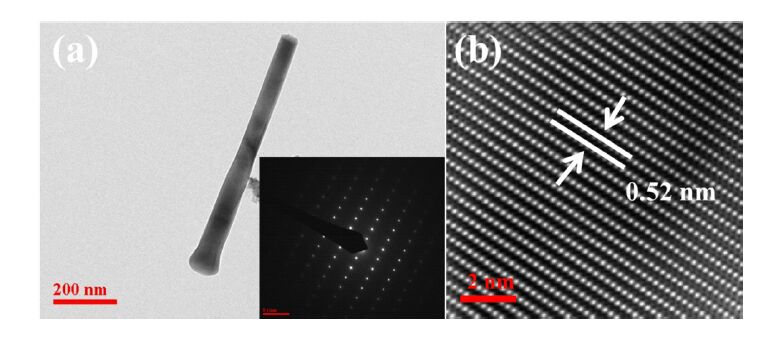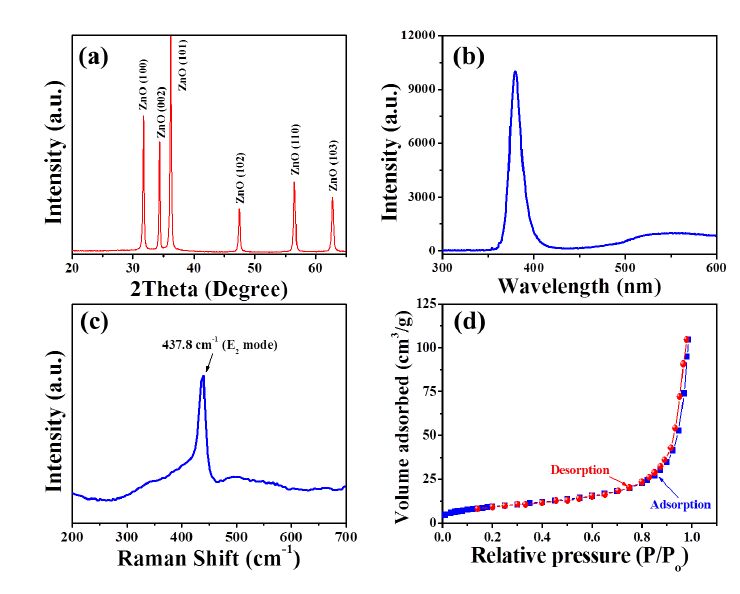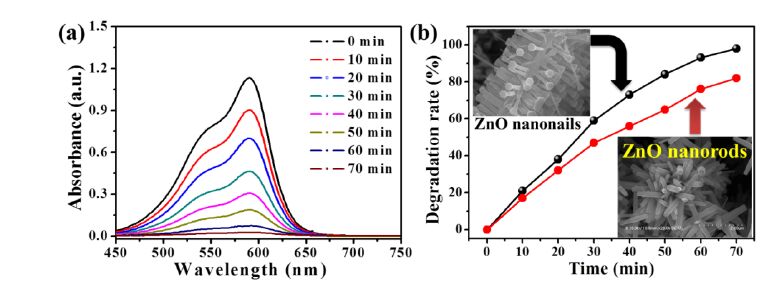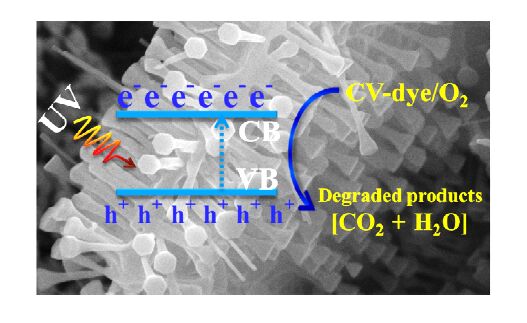1. Introduction
Crystal violet dye (CV-dye), an important dye, is highly used to dye papers, ball-point pens, ink-jet printers and as colourizer of diverse products such as fertilizers, antifreezes, detergents, and leather. It is also used in biological science for staining purpose as well as in dye processing. This dye is mostly discharged as industrial waste into the environment, thereby possesses high threat to humans, other species and ecosystem as CV-dye can easily interact with negatively charged cells membrane surfaces, and can enter into cells and concentrate in cytoplasm [1,2]. The CV-dye is responsible for moderate eye irritation, causing painful sensitization to light. It can also cause permanent injury to the cornea and conjunctiva [3]. Inhalation of CV-dye may cause irritation to the respiratory tracks, vomiting, diarrhea, pain, headache, and dizziness. Long term exposure may cause damage to the mucous membrane and gastrointestinal tract [4]. Hence, its removal from industrial waste before releasing into the environment is a critical issue, which further stimulates the scientific community to develop a cheap and economical strategy for wastewater treatment.
Attempts have been made to use advanced oxidation process through heterogeneous photocatalysis under UV illumination on semiconductor surface. In this process, highly reactive free radicals were generated that leads to degradation/decomposition of organic chemicals present in the wastewater [5,6]. Among various semiconductor oxides, Zinc oxide (ZnO) is one of the highly appreciable materials for its versatile properties such as wide and direct fundamental band gap energy of 3.37 eV with large exciton binding energy (60 mV), piezoelectric, biocompatible nature, high mechanical and thermal stability. Previously, ZnO with diverse morphologies have been used in wide arena including chemical/biological sensors, solar cells, photovoltaic devices, photodynamic nanomaterial for drug delivery systems and as photocatalyst for treatment of organic and dye pollutants [7,8,9,10,11,12,13,14,15,16,17,18,19,20].
It has been reported that the photodegradation of organic matter in solution is catalyzed by photoexcitation of a semiconductor, which results in the generation of an electron-hole pair on the surface of photocatalyst [6]. The high oxidative potential of the hole in the catalyst permits direct oxidation of organic matter (OM) to reactive intermediates. Later, reactive hydroxyl radicals were formed by the decomposition of water and help in organic chemicals degradation [21,22,23]. Therefore, nanostructures having large specific surface area and high crystallinity with good surface permeability will provide feasible environment for organic pollutants transport and thus enhances catalytic behavior. In this context, nanonails morphology of ZnO offers both valuable properties, i.e., high surface area and excellent crystallinity. Additionally, spatial freedom in its orientation could provide better surface permeability for their potential applications in sensor fabrication and photocatalysis [24,25]. Recently, Daud et al. employed ZnO nanonails as photocatalytic hydrogenproduction and demonstrated that ZnO nanonails have higher densities of defects, which favor it for better contribution in photocatalytic activity [25]. Manthina and Agrios explored the synthesis of different nanostructures including ZnO fibers, nanorods, cauliflowers, nanorod balls, nanoforest, nanopencils, ellipsoids, and nanotubes using different additives and varying conditions [26]. They concluded that morphology change could change the properties of nanostructures. In this paper, we synthesized ZnO nanonails in large quantity by thermal evaporation technique and further exploited for the photocatalytic degradation of CV-dye under UV light irradiation. A fast decomposition was observed with a degradation rate of ~95% within the initial 70 min.
2. Materials and Method
2.1. Synthesis of ZnO Nanonails
To synthesize ZnO nanonails, high purity Zinc (Zn) powders (99.99%) were used as source material in a horizontal quartz tube furnace with halogen lamp heating system on non-catalytic Si (100) substrates and argon (Ar) gas supply. Where, ~0.2 g zinc powders were uniformly spread in an alumina boat and placed at the center of the furnace tube. A cleaned Si substrate was put in the quartz tube and the temperature was increased at a rate of 25 °C/min from room temperature to reaction temperature (600 °C), while flowing the Ar gas. The reaction was carried out for 90 min and then allowed to cool down at room temperature. Finally, grown ZnO nanonails on Si substrate was collected and characterized in detail in terms of their morphological, structural, compositional, optical, and photocatalytic properties. Additionally, to compare the photocatalytic efficiency, we also synthesized ZnO nanorods using our previous report [27]. In brief, 0.04 M of Zn(NO3)2⋅6H2O and HMTA were dispersed in distilled water (50 mL); transferred into Pyrex glass bottle and heated at 85 °C for 4 h. The obtained product was washed to remove impurity and dried in air for further utilization as photocatalyst.
2.2. Characterization
The morphological characterizations were investigated by field emission scanning electron microscopy (FESEM, Hitachi S4700, equipped with energy dispersive spectroscopy (EDS)), and transmission electron microscopy (TEM, JEOL-JEM-2010 equipped with CCD camera). The crystallinity and crystal phase of the as-synthesized products were analyzed by X-ray diffraction (XRD, Rigaku) patterns with Cu-kα Radiation (λ = 1.54178 Å) in the range of 20-65° scanned at 40 kV. The optical properties were characterized by room-temperature photoluminescence (PL) spectra and Raman-scattering measurements carried out at room temperature with the He-Cd (325 nm) laser line as excitation sources and with 514.5 nm line of an Ar+ laser as the excitation source, respectively. The surface area of ZnO nanonails were measured by the Brunauer-Emmett-Teller (BET) using nitrogen adsorption-desorption isotherm analysis (ASAP 2010 analyzer at 77 K).
2.3. Photocatalytic Degradation of CV-dye
The photocatalytic degradation of CV-dye was performed using as-synthesized ZnO nanonails as photocatalyst under UV illumination for 0-70 min. The purchased CV-dye solution from Sigma Aldrich was prepared in 10 ppm solution and added with 0.1 g of as-synthesized ZnO nanostructures (nanonails and nanorods) into a conical flask under continuous stirring. Then, the suspension was stirred for 1 h in dark in order to stabilize the absorption of CV-dye over the photocatalyst surface. Afterwards, the photoreaction vessel was exposed to UV light under ambient conditions while stirring. At specific time intervals, the photoreacted suspension (2 mL) was taken out in every 10 min and centrifuged at 5000 rpm to separate the catalyst (ZnO nanostructures). The change in the absorption peak maximum in the UV-visible spectra of CV-dye was monitored using UV-visible spectrophotometer (2550-Shimadzu, Japan). The percentage of degradation of dye was estimated using the following equation:
Where, C0 and C are the concentrations of CV-dye at initial and at a particular time in the reactor, respectively.
3. Results and Discussion
The as-synthesized ZnO products has morphologically characterized by FESEM. The low-resolution FESEM image in Figure 1(a) shows that the ZnO nanonails were grown in large quantity on the Si substrate and consists of nail-like geometry with hexagonal tip. Interestingly, it seems that several nanonails were arranged forming a trunk-like structure (Figure 1(b) and (c)). The typical EDS spectrum of the nanonails in Figure 1(d) shows that the nanonails are composed of Zn and O elements only which also confirm the successful formation of ZnO nanostructures. Figure 2 shows the low- (a) and high-resolution (b) TEM image of as-grown ZnO nanonails. From the low-resolution TEM image of single ZnO nanonail, the engineered nanostructure possesses smooth and clean surface demonstrating that no nanoclusters or tiny nanocrystals are formed at the top of nanonails. TEM image also reveals the full consistency with the FESEM observations in terms of morphology and dimensionality. The TEM image clearly shows that the nanonails structure possesses a hexagonal tip on one side of the trunk. The high-resolution TEM image (Figure 2(b)), shows the perfect lattice structure with a lattice distance between two lattice fringes as ~0.52 nm, which corresponds to the d-spacing of [0001] crystal plans, consistent with the bulk wurtzite crystal of ZnO. Additionally, the SEAD patterns are also fully consistent with the HRTEM observations (inset in Figure 2(a)).
Further, the crystallinity, optical property, and structural disorders and the defects of the as-synthesized ZnO nanonails were examined by XRD, room-temperature PL spectrum, and Raman scattering spectroscopy, respectively (Figure 3).
XRD spectrum of the nanostructures shows that all the diffraction peaks were indexed to the wurtzite structured hexagonal phase of single crystalline bulk ZnO with lattice constant of a = 3.249 Å and c = 5.206 Å (JCPDS card No. 35-1451). The typical PL spectrum shows a high intensity, sharp and strong peak at 379 nm in the UV region and further confirms the highly crystalline nature of ZnO with the wurtzite hexagonal phases. Additionally, in Figure 3(c) Raman scattering spectra shows a clear and dominant peak at 437.8 cm−1, which corresponds to the Raman-active optical-phonon E2 mode of wurtzite ZnO [28,29]. Importantly, there was no peak for E1L mode that is associated with interstitial zinc, oxygen vacancies, and their complexes. Therefore, the synthesized ZnO nanonails offer high quality crystals without oxygen vacancies that could lead to a high photocatalytic activity towards dye degradation. Additionally, surface area of nanostructure materials is another important factor for better photocatalytic activity. We evaluated the surface area of as-synthesized ZnO nanonailsusing nitrogen adsorption-desorption isotherm, as shown in Figure 3(d). The ZnO nanonails offered high BET specific surface area, i.e., 56.8 m2/g, which is found to be better than other ZnO nanostructures including nanoparticles, nanodisks, and nanomultipods, nanorods, and nanoplates [30,31,32]. Thus ZnO nanonails with larger surface area may provide active sites for photocatalyticdegradation of dyes.
The degradation of CV-dye was examined by UV-visible absorbance spectra over the surface of ZnO nanonails photocatalyst under UV illumination (Figure 4(a)). The spectra show that with increasing UV exposure time (0-70 min), the absorbance of CV-dye decreases indicating reduction/decomposition of CV-dye over ZnO nanonails. After 70 minof exposure time, the absorbance of CV-dye decreased to ~95%, suggesting rapid degradation of dye. Figure 4(b) shows the calibration curve of the rate of CV-dye degradation (%) versus time interval. During initial UV exposure time, a sharp increase in the dye degradation percentage is observed, which is due to the high adsorption of CV-dye on the surface of ZnO nanonails. However, a fast degradation rate of ~95% obtained within a short exposure time of 70 min. From the pie chart (inset of Figure 4(b)), the major CV-dye degradation is observed during the first 40 min over the ZnO nanonails surface. Recently, the CV-dye degradation ability of different ZnO structures was also prominent such as dumbbell-shaped ZnO microcrystal [33] by 68.0% within 75 min; hollow prism like ZnO nanostructures [34] by 91% within 75 min; coralline-like ZnO nanostructures [34] by 55% within 75 min and in ZnO hollow spheres [34] 79.5% degradation was achieved within 75 min under UV irradiation. Compared with the above studies, ZnO nanonails shows enhanced photocatalytic degradation efficiency of CV-dye, which is attributed to the high crystallinity and better optical property of the as-grown ZnO nanonails. Moreover, in order to justify the potency of ZnO nanonails for photocatalytic activity, we have presented a comparison with ZnO nanorods and shown in Figure 4(b). Herein, we have synthesized ZnO nanorods using our previously published protocol followed by photocatalytic experiments. Compared to the ZnO nanonails efficiency of ~95% degradation rate, the ZnO nanorods demonstrated a lower performance (~82%) with same exposure time of 70 min (Figure 4(b)). This may be attributed to the larger size of ZnO nanorods providing lesser surface area for photocatalytic activity [32].
The fast degradation of CV-dye under UV light illumination (Figure 5) was explained by the photogeneration of electron-hole (e−-h+) pairs between the conduction (CB) and valence bands (VB) due to excitation of ZnO [6,35,36]. Where, the photogenerated e− in CB migrates to the surface; scavenged by the ubiquitous O2 to produce super oxide anion O2− and simultaneous protonation produces HOO⋅ radicals. While, h+ in VB moves to the backside of ZnO nanonails surface and reacts with either H2O or OH− to yield an active species such as OH⋅. The generation of active radicals (O2−, O2⋅−, HOO⋅/⋅OH) assists the mineralization of intermediates formed during catalytic degradation into the final, less harmful mineralized end products. Thus, fast photocatalytic degradation of CV-dye under UV illumination is assigned to high crystallinity and better optical features of ZnO nanonails that substantially increases the reactive species over catalysts surface.
4. Conclusion
The ZnO nanonails photocatalyst were successfully synthesized by thermal evaporation technique in large quantity and possesses high crystallinity and better optical characteristics. An enhanced photocatalytic feature of ZnO nanonails photocatalyst was studied for the degradation of CV-dye. After 70 min of photocatalytic degradation, the CV-dye degradation rate was observed to be ~95% for ZnO nanonails, which is more effective compared to ZnO nanorods (~82% degradation rate). Overall, the above results indicate that the as-prepared ZnO nanonails can be envisioned as a potential photocatalyst for efficient, rapid degradation of CV-dye into less harmful organics/minerals.
Acknowledgments
This work was supported by WCU program (R31-2009), Brain Korea 21 PLUS Project, NRF-2012M3A9C6050204, and Bio-industry Technology Development Program (KMFAFF, 112007-05-2-SB010).
Conflict of Interest
The authors declare no conflicts of interest regarding this paper.










 DownLoad:
DownLoad: 











